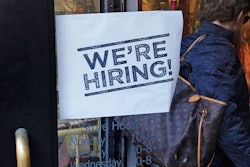U.S. workers' productivity jumped 3 percent in the third quarter, the strongest gain in three years, while labor costs remained moderate.
The increase in productivity in the July-September quarter was double the 1.5 percent gain in the second quarter, the Labor Department reported Thursday. Unit labor costs rose a modest 0.5 percent in the third quarter, up only slightly from a 0.3 percent gain in the second quarter.
The strong upturn in productivity, the amount of output per hour of work, is not expected to last. But economists are hopeful that future gains will be stronger than the anemic performance of recent years. Economists say increasing productivity is the biggest challenge facing the economy currently and without an improvement the Trump administration's goal of boosting economic growth will not be realized.
The stronger productivity increases in the past two quarters followed a scant 0.1 percent gain in the first quarter this year. The improvement reflected the fact that overall output, as measured by the gross domestic product, accelerated sharply following a weak start to the year. GDP grew at an annual rate of 3 percent in the third quarter, the government reported last week, and that followed a 3.1 percent rise in the second quarter. It was the first back-to-back GDP gains of 3 percent or better in three years.
Productivity actually declined in 2016, dropping 0.1 percent. It was the first annual decline in 34 years and followed a string of weak annual performances since the economy emerged from the Great Recession in mid-2009.
Productivity has averaged annual gains of just 1.2 percent from 2007 through 2016, a sharp slowdown from average annual gains of 2.6 percent from 2000 to 20007, increases that reflected a boost from increased use of computers and the internet in the workplace.
Rising productivity means increased output for each hour of work, which allows employers to boost wages without triggering higher inflation.
The challenge of boosting productivity back to the levels before the 2007-2009 Great Recession will be a key factor determining whether President Donald Trump can achieve his goal of boosting overall growth from the modest average annual gains of 2.2 percent seen during the current recovery, which is now in its ninth year.
During the campaign, Trump promised to double growth to 4 percent or better. His budget forecasts a still ambitious increase to gains of 3 percent per year as Trump's economic program of tax cuts, deregulation and tougher enforcement of trade laws takes effect.
Private economists say weak productivity and an aging workforce will make achievement of even 3 percent annual GDP growth a real challenge.






















